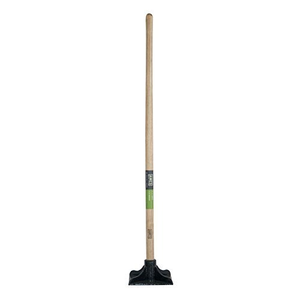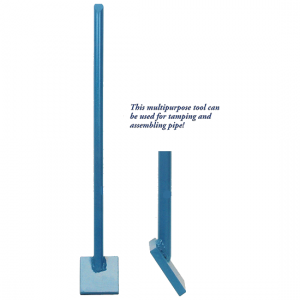Before laying the liner of your tubular pool, it is important to place on the ground a protection to maintain your pool in good condition.
Geo-textile mesh: it is a canvas that allows air and moisture to pass through. It therefore does not rot and has the advantage of limiting the re-growth of weeds. You must first level the ground before putting it down. It is ideal for turf or soil. The welded rail deburring device happens to be the best in this case.
The concrete slab: it is essential if your terrain is sloping or if it is rocky. It gives your pool a perfectly flat and smooth base. It requires, however, doing some work and a small investment.

How to prepare tubular pool terrain?
Even if your ground is flat, care must be taken to completely level it before laying the geo-textile and the liner:
- First draw the outside contours of the pool
- Remove 5 to 10 cm of soil from the area you have plotted
- Remove the roots, pebbles, and anything that may pierce or tear the liner
- If the ground is very inclined, payoff to obtain a flat surface. Feel free to use wire, mason’s rule, or electronic level to check ground level.
- Deposit a layer of sand 3 to 4 cm thick
- Water the sand to compact it using a roller compactor as much as possible
- Lay the geo-textile over the layer of sand and then place the liner over it.
- If you opt for a large tubular pool, if the soil is rocky or if the ground has tree roots, it is better to pour a concrete slab to ensure a stable and flat floor.
- If your terrain is very steep, you may even need to hire professionals to do some earthworks.
Railways are often strained and this can lead to damaged rails and train delays. A widely used method for assembling train rails is aluminothermy welding, known as thermite welding or exothermic welding. In this article you will know how such a weld is prepared, executed and what are the most common mistakes and risks.
What Is Aluminothermy Welding?
Aluminothermy welding is a welding process in which a welded joint is made by means of an aluminothermy reaction which is created by a chemical mixture of powdery substances. The process uses an exothermic reaction of a thermite composition to heat the metal and requires no heat source or external current. The chemical reaction is a reaction between an aluminum powder and iron oxide. The result is that you get the iron formation and the aluminum oxide waste product. The great advantage of an aluminothermy welding is that the contraction is very controllable. If you cast a weld, the thermal contraction is always the same. You get a very predictable settlement.
Aluminothermic welding is usually done on conventional train rails, but tram rails and special sections are also discussed. Each year, some 15,000 aluminothermic welds are executed on train rails. The rails have a carbon content of 0.7. This means that they have fairly high yield strength. An error in a rail grows into a tear big enough to break a rail. Most errors are retrieved but when they are not, you can have rail breaks. This implies that you must take special precautions when welding rails.

